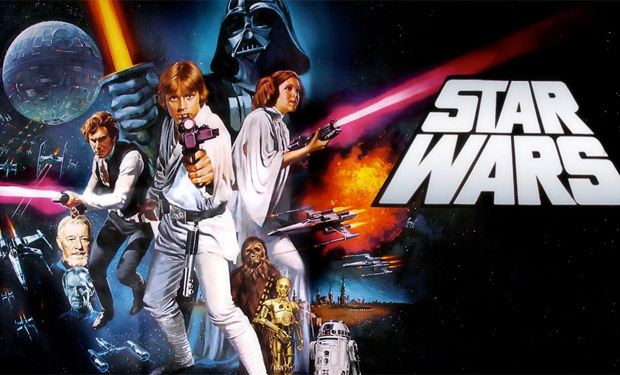The relationship between
science fiction and actual science is a delicate one. There are many movies and
TV shows that portray unrealistic visions of how the universe works—especially regarding
the setting of space. However, there are many cases where science fiction
provided the idea or inspiration for scientific research and discovery. For
example, science fiction writer Arthur C. Clarke wrote The Fountains of Paradise in 1979 where the main characters builds
a space elevator. While an actual space elevator has never been built yet,
there are many companies and researchers who are inspired to try to build such
an elevator to reduce the cost of transportation to space. The Japanese company
Obayashi Corp. plans to have an operational space elevator
by 2050 made of carbon nanotubes.
NASA artist rendition of a space elevator
Besides books, movies are
also inspiring scientific discovery about space. To make the special effects
depiction of the wormhole and blackhole accurate in the movie Interstellar, director Christopher Nolan
brought on astrophysicist Kip Thorne to work with his team. Using Thorne’s
theoretical mathematical equations, the special effects teams’ computers
discovered what a blackhole would actually look like. Before this, it had only
ever been conceived theoretically.
Kip Thorne's rendering of a black hole in Interstellar
In addition, astrophysicist
Jeanne Cavelos was inspired by the books and movies of Star Wars to write a book called The Science of Star Wars exploring the scientific potential of the
futuristic depictions of that world. In her book she discusses such
possibilities like space travel, hyperspace, light sabers, artificially
intelligent robots, and spaceships.
Star Wars Poster
While not all science
fiction may be scientifically feasible, it is certainly a source of ideas and
creativity for scientists to research and explore.
References
Cavelos, Jeanne. "Science of Star Wars." Macmillian Publishers. 2000. Web. 24 May 2015. <http%3A%2F%2Fus.macmillan.com%2Fthescienceofstarwars%2Fjeannecavelos>.
Fleming, Nic. "Should We Give up on the Dream of Space Elevators?" BBC. 19 Feb. 2015. Web. 24 May 2015. <http%3A%2F%2Fwww.bbc.com%2Ffuture%2Fstory%2F20150211-space-elevators-a-lift-too-far>.
Lucasfilm. Star Wars. Digital image. IFC. Lucasfilm, 18 Apr. 2013. Web. 24 May 2015. <http://images.amcnetworks.com/ifc.com/wp-content/uploads/2013/04/103012-star-wars111.jpeg>.
Mack, Eric. "Japanese Company Plans to Have Space Elevator "up" and Running by 2050." Gizmag. 23 Feb. 2012. Web. 24 May 2015. <http://www.gizmag.com/obayashi-space-elevator/21587/>.
NASA. A NASA Artist's Rendition of a Space Elevator. Digital image. Gizmag. 23 Feb. 2012. Web. 24 May 2015. <http://images.gizmag.com/hero/obayashi.jpg>.
Rogers, Adam. "WRINKLES IN SPACETIME: The Warped Astrophysics of Interstellar." Wired.com. Conde Nast Digital, Oct. 2014. Web. 24 May 2015. <http://www.wired.com/2014/10/astrophysics-interstellar-black-hole/>.
Sterling, Bruce. "Science Influenced by Science Fiction." Wired.com. Conde Nast Digital, 22 Sept. 2010. Web. 24 May 2015. <http://www.wired.com/2010/09/science-influenced-by-science-fiction/>.
Thorne, Kip. Executive Producer and Theoretical Physicist Kip Thorne's Rendering of a Black Hole in Christopher Nolan's Interstellar. Digital image. Dazed. 24 Oct. 2015. Web. 24 May 2015. <http://dazedimg.dazedgroup.netdna-cdn.com/786x700/azure/dazed-prod/1090/6/1096226.jpg>.
Tsjeng, Zing. "Sci-fi Film Interstellar Leads to New Scientific Discovery." Dazed. 24 Oct. 2014. Web. 24 May 2015. <http://www.dazeddigital.com/artsandculture/article/22292/1/sci-fi-film-interstellar-leads-to-new-scientific-discovery>.



Hi Stephanie,
ReplyDeleteI really enjoyed reading your blog. I specifically enjoyed how you talked about things in pop culture that have to do with the collaboration of art and science. These are not typically things that I would think of when thinking of art, but film is in fact a form of art. This class has opened my eyes to the different ways that art and science are prevalent in combination with each other in society and I think you did a great job focusing on how it can apply to people like us, such as with books and movies. I am looking forward to watching these movies because I have not seen them before!
Jordyn
Stephanie, I enjoyed reading your post as well. I also see a big connection between popular culture, entertainment, science and space. I think that the space influence on art that you mention seems to be becoming more profound lately with the release of movies such as Gravity and Interstellar along with the new Start Wars movie release dates. With Star Wars in particular, I love how thinking about space allows so many artists to create visions of what might be on other worlds including weapon designs, clothing designs and building designs. Thinking about space automatically helps artists think outside the box, I think, as they are trying to create things that they have never seen on Earth. I believe that this can fill them with new inspiration. Furthermore, ideas on how to get to space or survive in space are also inspiring artists. The space station at the end of Interstellar was a particularly amazing work of conceptual art, I thought. Very nice blog post.
ReplyDelete